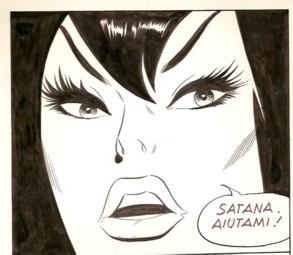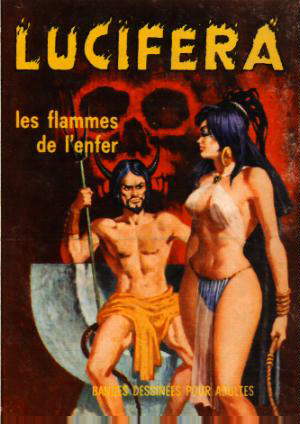On November 27th, 2022, the 8,000th article was added to the SuccuWiki!
Lucifera: Difference between revisions
(Created page with 'Category:Film and Media ''For other uses of the word Succubus, see Succubus (disambiguation).'' [[Image:Lucifera4.jpg|thumb|right|An original panel from 'Lucifera…') |
mNo edit summary |
||
| Line 1: | Line 1: | ||
{{increation}} | |||
[[Category:Film and Media]] | [[Category:Film and Media]] | ||
Revision as of 11:14, 28 September 2015
| This page is currently in creation and being actively worked on as a new article through a succession of edits. To help avoid confusion, the creator asks that this page not be taken as complete owing to its early stage of development. A history of edits of this page can be found here. |
For other uses of the word Succubus, see Succubus (disambiguation).
'Lucifera' is the eponymous anti-heroine of an Italian comic book popular in the seventies.
The 'Lucifera' character is a demoness/succubus dedicated to fighting the forces of Goodness. A frequent visitor to Hell, she also enjoys sending others there to be tormented. Her adventures are full of quite explicit, if humorous, eroticism and in one memorable scene she is shown fellating the devil himself. Other storylines involve Sado-Masochism, executions, impalement and even molestation by a giant spider.
On the surface world she seems to inhabit a mythical and very violent Europe from the Middle Ages - populated by wenches, knights and three-headed dragon dogs.
The 'Lucifera' comic book was published by Ediperiodici and ran for 170 issues from 1971 to 1980. A French edition was also published by Elvifrance and ran for 99 issues from 1972 to 1980.
Artists who have worked on the 'Lucifera' series include Edoardo Morricone (a.k.a. Morrik, who later worked on other Italian comics such as Biancaneve, Satanik and Djustine), Leone Frollo and Tito Marchioro.
Lucifera is one of many such characters from the Italian 'fumetti' tradition. Other figures from the same era, and with similarly violent or erotic preoccupations, include Zora la Vampira, Maghella, Biancaneve, Vartan, Jacula and Sukia.

